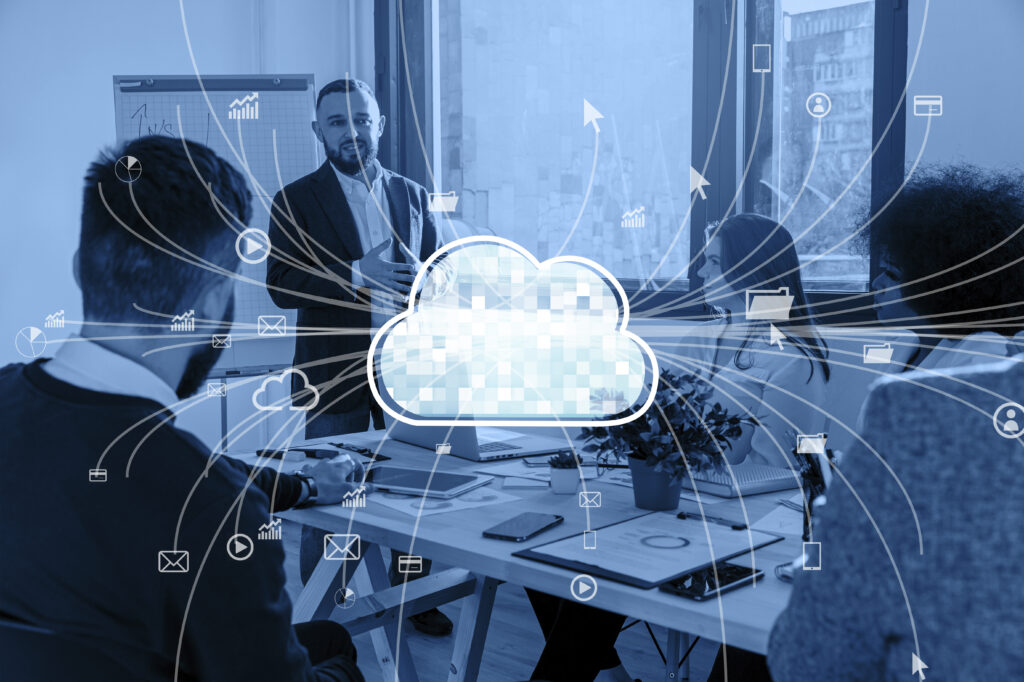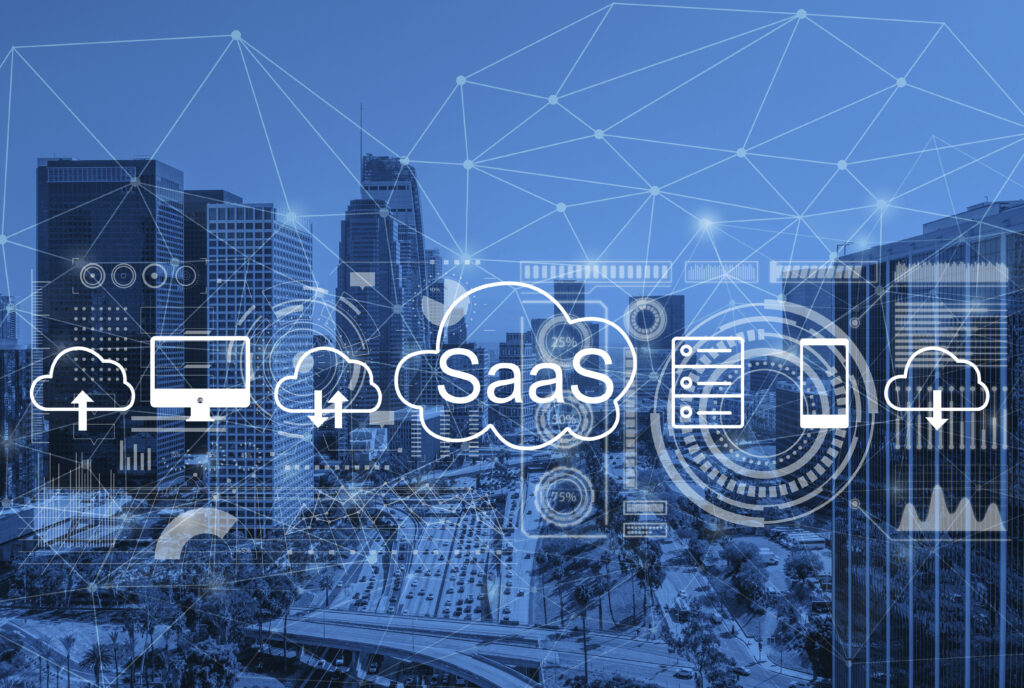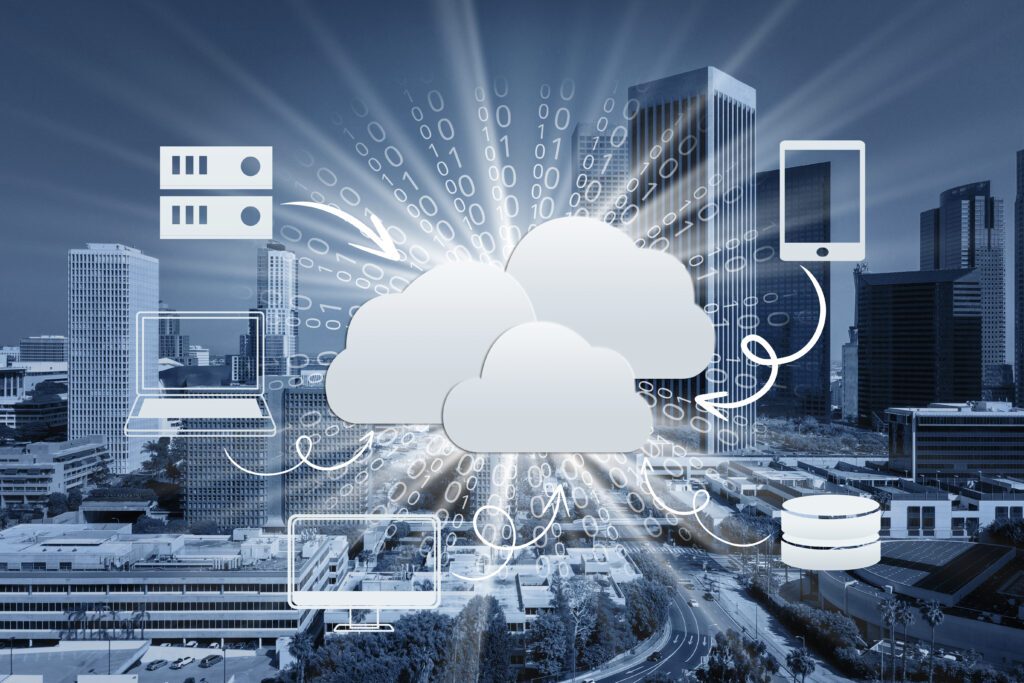Cloud computing – on-demand, internet-based access to shared physical or virtual servers, storage, network infrastructure, developer platforms, software, AI analytics tools, and more, billed on a pay-per-use basis.
In plain language, the “cloud” isn’t an actual cloud overhead—it refers to remote infrastructure in large-scale data centers that you tap into via the internet. This approach offers greater flexibility and easy scalability compared to traditional, on-premises systems .
In everyday use, whether it’s checking email, streaming a video, or playing a game hosted in the cloud, cloud computing removes the need to own or maintain physical servers or storage yourself. You simply consume the computing power or capacity you require.
For businesses, from small startups to multinational enterprises, cloud services have become mission-critical. They power remote work by delivering apps and data anywhere, enable seamless customer engagement across channels, and provide the scalable resources for emerging technologies like generative AI and quantum computing .
Benefits of Cloud Computing
1. Cost Efficiency & Pay‑Per‑Use
- No massive upfront price— rather than purchasing servers and software, you only pay for what you consume .
- Lower operating expenses — saves on maintenance, electricity, cooling, and personnel .
- Slim, flexible scaling — scale up in high demand and scale down in low demand, without wasting resources .

2. Speed & Agility
- Fast deployments — provision environments in seconds for Dev/Test or production use .
- Improved innovation — prototype and adjust rapidly, getting ahead of the competition.
3. Global Accessibility & Collaboration
- Accessibility from everywhere — cloud applications and data are accessible from any internet-enabled device .
- Support for remote & mobile work — enables distributed teams and remote-based work .
- Real-time collaboration — shared editing, file access, and workflow synchronization.
4. Security & Compliance
- Advanced security by design: Providers provide encryption, IAM, patching on a regular basis, and specialized security teams .
- Compliance support: Cloud service providers follow guidelines such as GDPR and HIPAA .
5. Business Continuity & Disaster Recovery
- Automatic backups: Data stored redundantly geographically, making it durable .
- Fast recovery: Rapid restoration capabilities reduce downtime following disruptions .
6. Performance & Reliability
- High-performance infrastructure: Cloud providers automatically update their networks and hardware on an ongoing basis.
- High availability: Integrated redundancy and load balancing increase uptime and survivability

7. Effortless Maintenance
- Cloud providers create and implement all the hardware and software upgrades on their end—all the technical expertise on their end.
- They actively install the newest patches and updates to maintain systems stable and secure without interfering with your operations.
8. Environmental Sustainability
- Cloud computing promotes efficiency in resource use by enabling shared, optimized data center operations. It reduces energy and carbon use—public clouds can reduce energy use by 80–90% compared to on-premises installations
9. Innovation & Competitive Advantage
- Cloud platforms deliver instant access to cutting-edge technologies like AI, machine learning, IoT, and analytics—without the need to make significant upfront investments.
- They also enable businesses to get going quickly by prototyping, testing, and putting new products on the market at pace—taking them to a real advantage in high‑speed markets.
Service Models
IaaS (Infrastructure as a Service)
- Rent virtual machines, storage, and networks. You own OS, data, and applications; provider owns hardware.
PaaS (Platform as a Service)
- Provides a platform for app development and deployment. Good for developers who don’t want to work on infrastructures.
SaaS (Software as a Service)
- Run full software applications over the web without worrying about underlying infrastructure. Consider Gmail, Salesforce, Microsoft 365

Components of Cloud Computing
1. Front-End Platform
The front-end platform is the part of cloud computing that you actually use. It includes things like:
- User interface – where you are interacting with the service, either via a graphical user interface (GUI) or command-line interface (CLI), accessed via apps, web browsers, or desktops.
- Client software – the software you use to access cloud services (for example, Chrome, Safari, mobile apps, or CLI tools).
- Your network or device – be it laptop, tablet, or smartphone, whichever it might be, it takes you to the cloud easily
2. Back-End Platform
Consider this as the cloud’s engine room—totally in the control of your cloud provider to drive everything you utilize.
Compute
- Both actual servers and virtual machines or containers upon which your applications are executed and processing is carried out in the background.
Storage
- Supports various forms of data:
- Object storage (such as Amazon S3) for items such as images and files
- Block storage (i.e., virtual hard disks for your virtual machines)
- Shared storage of files, as network drives
Databases
- Offers managed relational (SQL) and NoSQL databases to store structured or unstructured data without your worry about backup or scaling.
Middleware & Management Tools
- Comes with features like Kubernetes, deployment pipelines, monitoring, logging, and auto-scaling, which allow you to run your apps optimally and scale with demand.
Security & Compliance
- Built-in protections such as:
- Identity and access management (IAM)
- Data encryption in transit and at rest
- Firewalls, compliance software, and audit services to keep everything secure and compliant

3. Network
- Cloud networking unifies front-end and back-end infrastructure to deliver core services:
- Virtual Networks & VPCs: Simulates full private networks in the cloud, fully isolated for secure usage.
- Gateways & Load Balancers: Distribute user traffic efficiently among servers, so that no server is overloaded.
4. Virtualization
The unheralded hero of cloud computing: it allows for a single physical device to simulate dozens of virtual devices:
Hypervisors (e.g., Xen, KVM) These are the hosts for virtual machines (VMs), which are essentially independent servers with their own operating systems.
Containers (e.g., Docker, Kubernetes)
Lighter than virtual machines, containers execute on the host operating system but segregate applications for portability and performance.
This hierarchical virtualization accommodates:
Multi-tenancy & resource usage: Supporting multiple workloads on shared hardware securely. Scalability & flexibility: Spin up or tear down development, testing, or high-demand environments with ease
6. Security & Compliance
- Critical to protecting information and systems from:
- IAM and role-based access
- Encryption, both in transit and at rest
- Security frameworks, audit logging, and compliance management (e.g., GDPR, HIPAA).
7. Middleware & Management Tools
These critical components ensure smooth operations: Middleware: Web/app servers, enterprise service buses, APIs Management tools: Track usage, automate backup, coordinate deployment, allocate resources, and perform disaster recovery
Core Models & Architecture
IaaS (Infrastructure as a Service) delivers virtualized compute, storage, and network resources, releasing companies from managing hardware. It is the basis of public, private, and hybrid clouds .
oud-native applications employ containers, microservices, serverless functions, immutable infrastructure, and declarative automation to construct scalable and robust apps.




sbkoyz